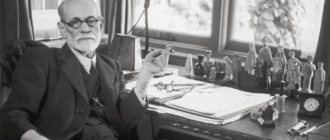2.5. CONCEPT OF PERSONALITY K. K. PLATONOV
This concept is the most striking example of the implementation of the ideas of a structural approach to understanding human personality. K.K. Platonov considers personality as a dynamic system, that is, a system that develops over time, changing the composition of its elements and the connections between them, while maintaining the function.
In this system, the author identifies four personality substructures. The criteria for identifying substructures are:
• the relationship between biological and social, innate and acquired, procedural and substantive;
• internal similarity of personality traits included in each substructure;
• each substructure has its own special, basic forming tool (education, training, training, exercise);
• objectively existing hierarchical dependence of substructures;
• historical criteria used for the essential understanding of personality: “personality as the sum of mental properties,
“personality as human experience, “biologization of personality, “sociology of personality.
The application of these criteria to the analysis of personality allowed the author to identify the following main substructures in its structure:
1. Substructure of personality orientation and relationships, which manifest themselves in the form of moral traits. They do not have innate inclinations and are formed through upbringing. Therefore, it can be called socially conditioned. It includes desires, interests, inclinations, aspirations, ideals, beliefs, worldview. All of these are forms of manifestation of direction in which personality relationships are manifested. However, K.K. Platonov considers attitude not as a property of a person, but as “an attribute of consciousness, along with experience and cognition, which determines various manifestations of its activity.” According to K.K. Platnov, the parameters of this substructure should be considered at the socio-psychological level.
2. The substructure of experience, which “combines knowledge, skills, abilities and habits acquired through training, but with a noticeable influence of biologically and even genetically determined personality properties.” K.K. Platonov admits that “not all psychologists consider these properties as personality traits.” But consolidating them in the learning process makes them typical, which allows them to be considered personality traits. The leading form of development of the qualities of this substructure - training - also determines the level of their analysis - psychological and pedagogical.
Substructure of experience in Platonov
The next subsystem, which talks about the psychological mechanisms of acquiring experience, is interpreted by Platonov as a socio-biological characteristic of the subject. This point combines knowledge, skills, habits and abilities as genetically determined personality traits. The social structure of Platonov’s personality suggests that these parameters relate specifically to its properties. He explains his theory by the fact that in the process of learning, acquired knowledge or skills for a person become typical, ordinary and inalienable. Therefore, they begin to relate to the personality properties of the subject. If we talk about the relationship between the social and the biological in this subsystem, then there is more of the former here, since learning comes to the fore. And it relates to psychological and pedagogical characteristics.
Main part
2.1. Personality theories in Russian psychology
In 1931 L.S. Vygotsky wrote that “the central and highest problem of psychology—the problem of personality and its development—still remains closed.” Around the same time, in 1937, G. Allport, in his book “Personality: A Psychological Interpretation,” gives more than 50 different definitions of personality. An attempt to synthesize them was unsuccessful, and Allport was forced to abandon the definition of personality.
K.K. Platonov notes that during the period from 1917 to the 70s in Soviet psychology, four dominant theories of personality can be distinguished:
1917-1936 - personality as a profile of mental traits;
1936-1950 - personality as human experience;
1950-1962 - personality as temperament and age;
1962-1970 - personality as a set of relationships manifested in direction.
Since the mid-60s, attempts have been made to clarify the general structure of personality. In 1969, the All-Union Symposium on Personality Problems was held, which was held under the sign of an understanding of personality as a biosocial being and a structural approach.
By the end of the 70s. the orientation towards a structural approach to the problem of personality is replaced by a tendency to use a systemic approach, which requires the identification of system-forming characteristics of personality.
In psychological science, the category of personality is one of the basic categories. It is not purely psychological and is studied essentially by all social sciences. In this regard, the question arises about the specifics of the study of personality by psychology: all mental phenomena are formed and developed in activity and communication, but they belong not to these processes, but to their subject - the social individual, the personality. Along with other principles in psychology, a personal principle has been formulated, which requires the study of mental processes and states of the individual (B.G. Ananyev, S.L. Rubinstein, K.K. Platonov).
Starting to review the main domestic concepts of personality psychology, it should be noted that in terms of content, the structural approach still dominates, and subsequently the system-structural approach that replaced it. The concepts of personality became most famous in the schools of S.L. Rubinshteina, L.S. Vygotsky - A.N. Leontyeva, B.M. Teplova, K.K. Platonova (Moscow); A.F. Lazursky - V.N. Myasishcheva, B.G. Ananyeva (St. Petersburg).
The problem of personality structure
In psychological science, the category “personality” is one of the main concepts. Personality is usually defined as a person in the context of his social, acquired characteristics. Personality does not include those characteristics of a person that are genotypic or physiological.
The term “personality” is closely related to those characteristics that are more or less stable, indicate a person’s individuality and determine his actions that are significant to others. Personality is a social face, a “disguise” of a person. Personality is the highest integral concept, a system of human relations to the surrounding reality (V.N. Myashev). Personality is a set of social relations realized in various types of activities (A.N. Leontyev).
Personality is a set of internal states through which all external influences are refracted (Rubinstein). Personality is a social individual, an object and subject of social relations and historical processes, manifested in communication, activity and behavior (Hansen).
I.S. Kon: the concept of personality refers to the human individual as a member of society, generalizes the socially significant characteristics that are integrated in it. B.G. Ananyev: Personality is the subject of social behavior and communication. A.V. Petrovsky: Personality is an individual as a social individual, a subject of cognition and objective transformation of the world, a contradictory being, possessing language and capable of labor activity.
K.K. Platonov: Personality is an individual as a carrier of consciousness. B.D. Parygin: Personality is an integral concept that characterizes a person as an object and subject of biosocial relations, uniting in him the universal, socially specific and individually repeatable. The elements of a personality's psychological structure are its psychological characteristics and traits, usually called "personality traits." There are a lot of them. But psychologists are trying to conditionally fit all this elusive number of personality traits into a number of substructures.
The lowest level of personality is a biologically determined substructure, which includes age, gender characteristics of the psyche, innate characteristics such as the nervous system and temperament.
The next substructure includes individual characteristics of a person’s mental processes, that is, individual manifestations of memory, perception, sensation, thinking, abilities, which depend both on innate factors and on learning, development, and improvement of these characteristics.
In addition, the level of personality is also its individual social experience, which includes the knowledge, skills, abilities and habits that a person has acquired. This substructure is formed mainly during the learning process and is of a social nature.
The highest level of personality is its orientation, which includes desires, wants, interests, inclinations, ideals, views, beliefs of a person, his worldview, character traits, self-esteem. The substructure of personality orientation is the most socially conditioned, formed under the influence of upbringing in society, and most fully reflects the ideology of the community in which the person is included.










